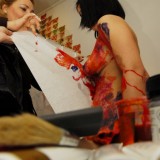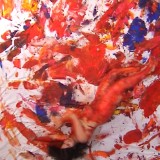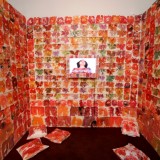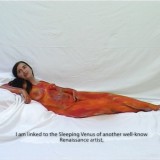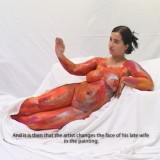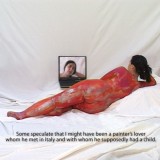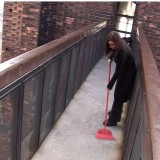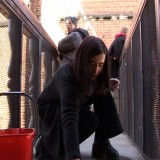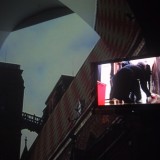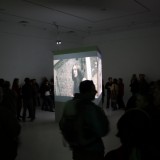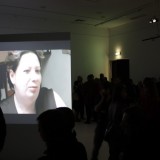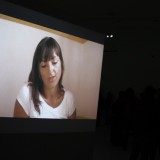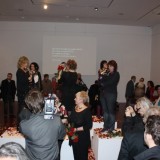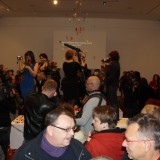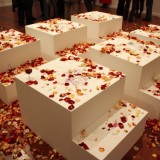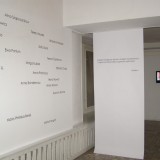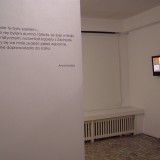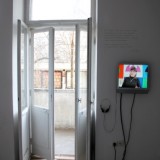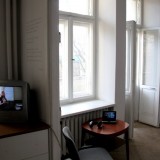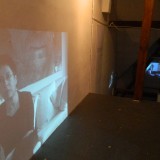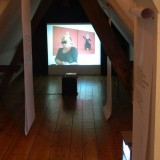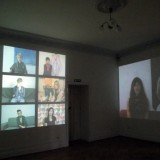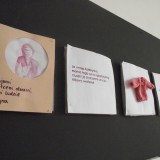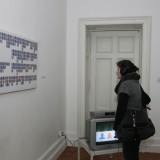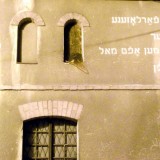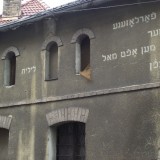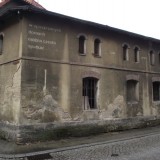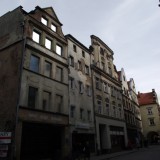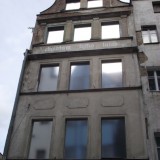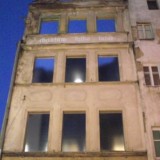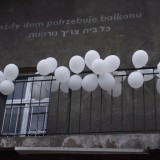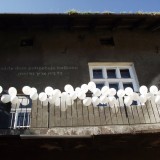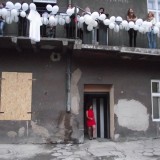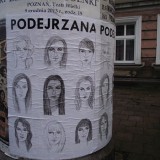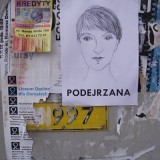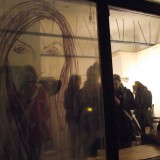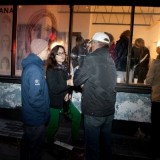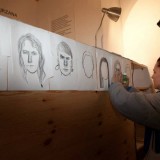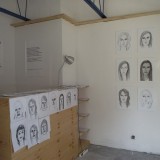Anka Leśniak
Anka Leśniak graduated from the Art History department within the University of Łódź (2003) and the Department of Visual Education (currently the Department of Visual Arts) in the Academy of Fine Arts in Łódź (2004). In 2011 she received a bursary from the Polish Ministry of Culture and National Heritage. Since 2013 she has been a doctoral student at the Department of Sculpture and Intermedia within the Academy of Fine Arts in Gdańsk. She has participated in exhibitions and projects in Poland and abroad, for example in the Festival of Young Art entitled “Drought” in Szczecin, 2007, Fokus Łódź Biennale (2010), PAN Asia Festival in Seoul (2012). The artist most often works in the media of video, performance, art in the urban environment and photography. The inspiration for her works are the forgotten stories of women who functioned in various fields of life: social, cultural, religious and artistic.
Leśniak defined her attitude towards art in her work Art critic as its material (2006), in which the artist explained the idea of her favourite genre – painting – by focusing upon sensuality, painting which is carnal, a nude which emerges through touch, through the contact of painted matter with the body. Painting which is attractive and erotic in all meanings of the word.
Anka Leśniak’s first substantial project were the actions entitled Body Printing (since 2007) which she created in Poland and abroad. The essence of Body Printing was a connection of painting, monotype and performance. The interiors of galleries in which her actions took place, were filled by her paintings consisting of stamps. Each of the paintings consisted of a small stamp of the artist’s private parts, however these expressive images were exhibited in great number. A free gesture, in which they emerged was contrasted with a certain system, a very consequent arrangement in strips. The gesture here collaged with the geometry, a human being colliding with mathematics, the stamps of the body combined with the architecture of the space, as Leśniak adjusted the size of the images to the size of the room and its walls. During her action the artist invited the audience one by one into a previously prepared intimate space, where she awaited them naked, ready to paint her body with a chosen colour of paint. The viewers who are usually passive, during these actions became active participants of the process of the emergence of these works. They made the stamps of the fragments of the artist’s body themselves. In these actions the relationship between the artist and the viewer gathered a very individual, even intimate character. In Body Printing Leśniak not only crosses the line of painting and connects it with other media, but also fills the existing gallery space with painting giving life to works which may be described as site-specific. The stamps of the artist’s body appeared not only in the gallery space as paintings made by them, but also on the curtains which marked the “artist’s space”, on works which emerged during the action, on pillows, a dress and also in larger formats.
A sensitivity towards the quality of life of women and their roles, often forgotten in a flood of male issues, allows Leśniak not only to reach through to important figures, but also to bring attention to a marginalising of the issue and to change the perspective. In this way her works become a voice in a broader discussion, they may even become an impulse for a form of academic research. In the project Top Models (2009) she focused on models known from the paintings of old masters, who are only recognisable however none of us knows who they were. The artist impersonated some of them and relayed their stories, in an attempt to present information about the women who are featured on the paintings. The stories that she told were the result of research and at the same time, a gesture of respect towards these women, giving back their identity, humanising the model, so that the ideal body ceased to look like a nobody. This way she moved many issues on many levels. Although Top Models was devoted to other women, in the foreground we see Leśniak the artist who consequently completes her artistic plan including: sensual, bodily, authentic painting based on gesture. By recalling the works of the great masters, referring to easily recognisable paintings and the icons within painting, Leśniak asks a question about the identity of anonymous women presented on paintings, and at the same time shows her own art. Once again she puts herself in a double role of an artist and model, an active and passive element, the viewing and being viewed. She enters into a dialogue with the tradition of art history, recalling well-known artworks and filling them with her presence, however Leśniak’s work cannot be called a quotation or a pastiche.
Leśniak returned to the topic of the woman-model-muse in her work The Story of the Łódź Kaliska group told by the Muses (2009/2010), which is apparently only a history of the Łódź Kaliska group. In fact it’s a condensed story of the relationship between the Łódź Kaliska group and its Muses, shown from the perspective of the latter. The fact that the Muses are an inseparable part of the Łódź Kaliska group is undeniable, one may only argue how large and how much of an important part. In Anka Leśniak’s film she shifted the perspective and presented a view of the Łódź Kaliska group from an unusual side, making the Muses its main heroines.
She undertook the topic of women and their role in culture and society in the works Fading Traces (2010) and Registered (2011). In these works she used a documenting strategy. Both works are based on interviews that she conducted – this time with female artists. Fading Traces featured female artists who started their career in the 70s and Registered featured young artists from her own generation. Her interest shifted away from the artworks and the facts that we can read about in books, to the context of highlighting the individual feelings of the people who have created it. Both works allowed Leśniak to portray an image of art created by women, including the various situations and problems that they came across. Thanks to them one may also observe how artistic practice has changed through the years.
Another works undertaken by Leśniak, in which she also researches the story of women are in the form of installations and actions in the public environment. One of them was entitled The Penitent Women Bridge (2008) which stretched between two towers of the Mary Magdalene’s Church in Wrocław. The artist reminded the viewer of its ancient function, which was a place for the penitence of unfaithful wives. The artist has completed a series entitled Sur-realisations (since 2007) in which she penetrates into the stories of abandoned and forgotten places. On old buildings she places signs which connect in a literal and metaphysical way with the story of the place and also with particular woman’s story. Leśniak structures a message in such a way so that it could be read on many levels, and also so that its meaning emerges out of the context of the place.
Her most recent works are addressed to anonymous and obscure women who for some reason were excluded from society and she asks questions about the reason for this exclusion. By abandoning individual stories she turns towards more general issues associated with how women function and broader understood problems of exclusion in the contemporary world.
Karolina Jabłońska
More at the artist’s web site:
http://www.ankalesniak.pl/


